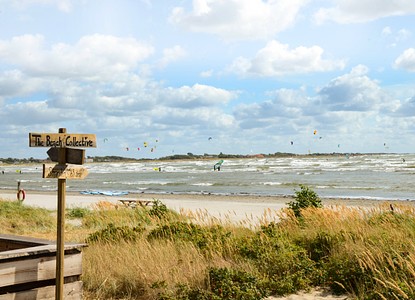
Provided by:
Visit Varberg

Our travel guides are free to read and explore online. If you want to get your own copy, the full travel guide for this destination is available to you offline* to bring along anywhere or print for your trip.
*this will be downloaded as a PDF.Price
€4,95
The City
The guide was updated:
Varberg, a municipality of over 63,000 inhabitants, is situated on the west coast of Sweden. It's where the rugged Bohuslän coast meets the open coast of Halland with its extensive sandy beaches.
Varberg has a complex history and is the most relocated town in the Nordics, having had five different locations. The current layout as a grid-plan town dates back to the 1660s. Varberg's castle and fortress, initially built in the 13th century on the Wardberg rock, have a significant history. "Ward" means guard, and large fires, known as 'vårdkasar,' were lit here as defensive signals. The fortress has housed many kings and queens over the centuries.
The 19th century saw the development of Varberg as a spa town after a water source was discovered in Apelviken. The buildings from that era, including the Cold Bath House, Warm Bath House, and Societetsparken, still stand and serve their original purposes. Moreover, several hotels with spa departments offer unique experiences ranging from thalassotherapy (seawater spa) to Asian-inspired spa treatments.
Varberg is a popular destination, with tourism being a significant sector of its economy. The town boasts a diverse range of businesses, including food producers, distribution companies, and innovative IT firms.
Varberg has a complex history and is the most relocated town in the Nordics, having had five different locations. The current layout as a grid-plan town dates back to the 1660s. Varberg's castle and fortress, initially built in the 13th century on the Wardberg rock, have a significant history. "Ward" means guard, and large fires, known as 'vårdkasar,' were lit here as defensive signals. The fortress has housed many kings and queens over the centuries.
The 19th century saw the development of Varberg as a spa town after a water source was discovered in Apelviken. The buildings from that era, including the Cold Bath House, Warm Bath House, and Societetsparken, still stand and serve their original purposes. Moreover, several hotels with spa departments offer unique experiences ranging from thalassotherapy (seawater spa) to Asian-inspired spa treatments.
Varberg is a popular destination, with tourism being a significant sector of its economy. The town boasts a diverse range of businesses, including food producers, distribution companies, and innovative IT firms.



